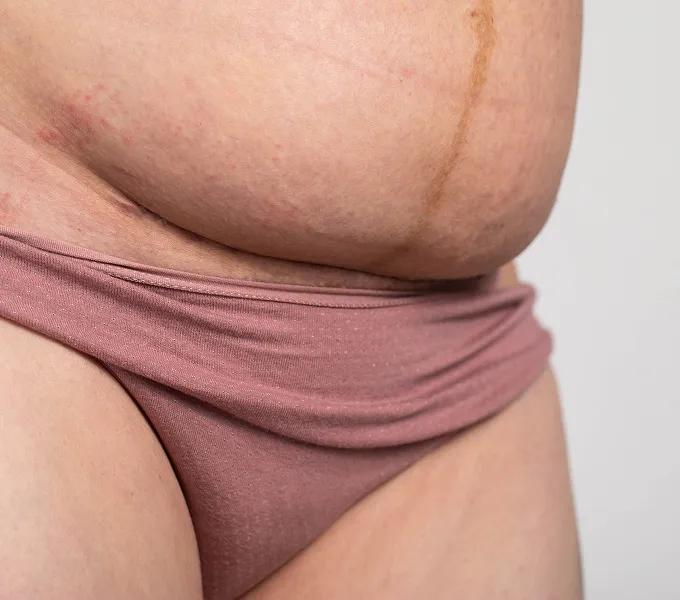
6 Exercises That Help Relieve Postpartum Back Pain
The human back is incredible. It's able to support your body's movement, move into a range of positions, protect your spinal cord and withstand compression when you need to carry heavy loads. But for anyone who has experienced back pain, it can be hard to appreciate all that your back does for you on a regular basis, because that pain can be completely debilitating.
Low back pain (LBP) is the leading cause of disability worldwide and a very common complaint among people during pregnancy and the postpartum period. In those first few months postpartum, when your baby needs you most, the last thing you want to think about is your back. But this is also when your back may be the most vulnerable: your abdominal muscles are learning how to function in a suddenly new position, your hormones are dramatically fluctuating, your posture is shifting, and you are probably very sleep deprived.
Whether you are healing from a cesarean delivery or trying to feed a baby who has trouble latching or perhaps making plans to return to work, if your back starts to hurt, that pain can stop you in your tracks. It can make simply getting in and out of bed a struggle and lifting or lowering your baby nearly impossible.
To help your postpartum body heal and protect yourself from developing low back pain, try these 8 exercises! And if you've already started to experience low back pain, you're not alone, these exercises can also help reduce your pain and prevent re-injury so that you can get back to what (and who) you love most.
#1 Find your neutral spine position.
Your back can tolerate many different positions — twisting, bending, arching, leaning — but it does not like staying in any one of them for very long. If you are going to do something for an extended period of time like feed a baby, sleep, or ride in a car, your back prefers to be in a neutral position.
Doing pelvic tilts can help you find a neutral spine position and then find ways to support your body to stay in that position by using wedges, towel rolls, or pillows to keep your spine and pelvis supported for those longer stretches of time.
How to do pelvic tilts:
Stand with your feet hip distance apart and back against a wall. This is your neutral spine position.
Tip: When in neutral position, there will be a small space between your low back and the wall.
- Tuck your tailbone, pressing your lower back into the wall, removing any space between your back and the wall, and forming a "C" position. Tip: Keep your shoulders relaxed and your shoulder blades against the wall.
- Return to your starting position.
- Keep your pelvis in contact with the wall as you pull your low back further away from the wall, feeling your tailbone move towards the wall with this motion.
- Return to your starting position.
#2 Activate your deep core.
Your transversus abdominis (TrA) muscle is the deepest layer of your abdominal muscles and is sometimes referred to as your "built-in back brace." During pregnancy, this muscle can become stretched out and exhausted, so take time to wake this muscle up after delivery by activating your core before you move, before you lift your baby, before you roll into bed, etc. Then begin to rebuild your TrA's endurance by keeping the muscle engaged throughout the length of any activity. Remember not to hold your breath!
How to activate your TrA:
Stand with your feet hip distance apart and your hands placed on your lower belly.
- Inhale and feel your belly expand, filling your cradled hands.
- Exhale and pull your belly up and in towards your spine and away from your hands to activate your Transverse Abdominal muscle. Tip: Practice keeping your core engaged while breathing normally.
#3 Lift with your legs.
Your glutes are the largest muscle group in your body and help bring stability to your hips, core and pelvis. Postpartum is an important time to make them work for you — so you don't overwork your back. Squeeze your glutes every time you go to stand up from a chair or get up off of the floor or lift something heavy. Remember to bend at the knees, not at the waist!
If you find squats challenging postpartum, use a chair for support.
How to do supported squats:
Stand behind a chair or table with your feet slightly wider than hip distance apart. Place your hands on the backrest for support.
- Pull your belly button in towards your spine to activate your core. Keeping your core engaged, push your hips back and bend your knees as though lowering to sit in a chair. Tip: Use the chair for balance or to help you drop into a lower squat.
- Squeeze your glutes and straighten your legs to return to standing. Tip: If needed, use the chair to help pull yourself up.
#4 Stretch your hips.
You may find yourself sitting more than ever in the postpartum period. All that sitting, while necessary to care for your baby and allow yourself to rest and heal, may be causing your hip flexors to become pretty tight. Unfortunately, that means they may be tugging at the joints of your low back potentially bringing your spine and pelvis out of alignment and causing increased low back pain. Take a moment to stretch these out every day to keep your muscles lengthened!
How to stretch your hip flexors:
- Kneel with a wall or other stable surface nearby for support.
- Bring one leg forward, positioning your foot in front of you so that your knee is at greater than a 90 degree. Tip: Use a yoga mat, pillow or folded towel under your knees for cushioning.
- Tuck your tailbone and shift your weight onto the forward leg, bringing your knee above the ankle and creating a 90 degree angle with your front leg. Tip: Avoid pushing your front knee forward past your toes.
#5 Move through your full range of motion.
As your range of motion improves with time, you will be able to move your spine further while doing cat-cow. For now, make slow movements and pause once you feel a gentle stretch, avoiding any painful positions. If you are unable to perform this exercise to any degree without pain, reach out to your healthcare provider or a physical therapist for guidance that is more specific to your needs.
How to do cat-cow:
Start on your hands and knees with your hands under your shoulders and knees under your hips.
- Inhale, allowing your belly to drop towards the floor.
- Draw your shoulders away from your ears as you bring your gaze up towards the ceiling and lift your tailbone, arching your back.
- Exhale, drawing your belly up towards your spine.
- Push through your palms as though trying to touch the ceiling with your mid back, tuck your tailbone and bring your chin to your chest, rounding your back upwards. Tip: Feel free to hold either position for a few breaths before moving forward.
- Return to starting position.
#6 Breathe deeply.
Your diaphragm is a muscle located at the bottom of your ribs, beneath your lungs and just above your stomach. It is your primary breathing muscle and helps to manage intra-abdominal pressure, support GI function, and keep the muscles of your core and pelvic floor mobile. During pregnancy, as your baby grows and your ribs are pushed outwards, the diaphragm can become less effective. This muscle is often overlooked but rebuilding its function postpartum is crucial in reducing your lower back pain.
If you are experiencing low back pain, don't wait to do something about it. Try these exercises and check out these tips for avoiding back pain when taking care of your baby. If these strategies don't provide enough support, consider booking an in-person or online visit with an Origin PT for recommendations that are right for you.




